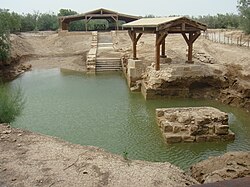This article may require copy editing for grammar, style, cohesion, tone, or spelling.(December 2024) |
This is a list of sites notable as destinations of Christian pilgrimage, sorted by region and by (modern) country.
Contents
- Old World
- The Holy Land
- Eastern Christianity
- Western Christianity
- New World
- Sub-Saharan Africa
- East and Southeast Asia
- Latin America
- North America
- References
This page has a wider view of the topic, while the "pilgrimage church" page offers Catholic sites.
This is a list of sites commonly visited by Christian pilgrims. For a list of Roman Catholic churches often visited by pilgrims, see Pilgrimage church.
















